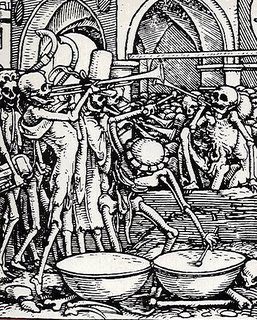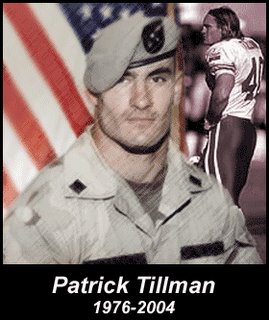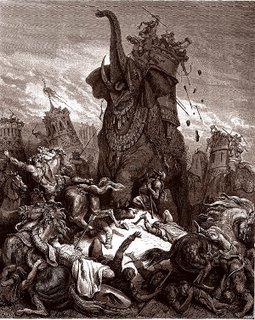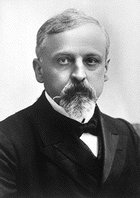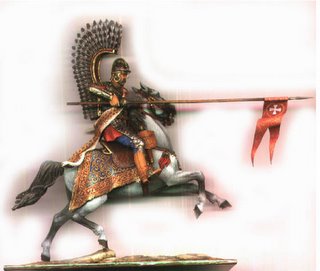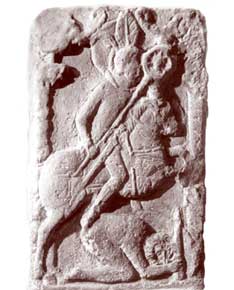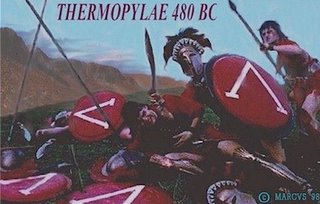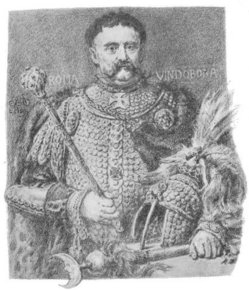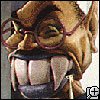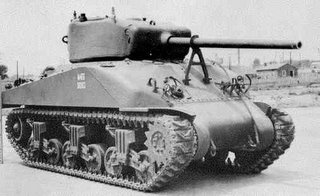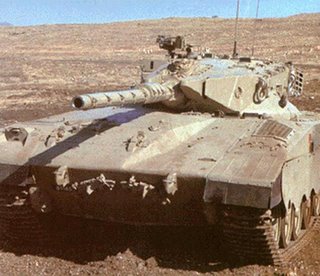This is coolbert:
Military quotations.
A reading of military quotations requires a lot of time, there are so many of them.
I have not even touched upon the Maxims of Napoleon.
This is just a small sampling of military quotations, ones that I have found to be apropo. A lot of wisdom concerning military subjects is contained in these quotations. My comments are in bold, as usual:
------------------------------------------------------------------------------
"It is a good thing for an uneducated man
to read books of quotations"
- Sir Winston Churchill
And for the educated man as well."Professional soldiers are sentimental men, for all the harsh realities of their calling. In their wallets and in their memories they carry bits of philosophy, fragments of poetry, quotations from the Scriptures, which, in times of stress and danger speak to them with great meaning. (Ridgway)"
So this does say that the commander does remember these quotations and pay heed to them?--------------------------------------------------------------------------
"Anyone who has ever looked into the glazed eyes of a soldier dying on the
battlefield will think hard before starting a war."
-Otto Von Bismarck
"In war there is no second prize for the runner-up."
-General Omar N. Bradley ,U.S. Army, 1950
These two above men did understand that war is "hell". I am wondering if Bismarck is speaking about the slaughter of Mars La Tour, in 1870? The survivors were described as walking about with dazed, withdrawn looks on their faces.-----------------------------------------------------------------------------
"Battles are won by slaughter and maneuver. The greater the general, the more he contributes in maneuver, the less he demands in slaughter."
- Winston Churchill
Rather than use head-to-head tactics to attack southern forces of the Confederacy, Sherman used maneuver to keep the enemy off balance and to keep the initiative with his army.--------------------------------------------------------------------------
“Given the same amount of intelligence, timidity will do a thousand times more damage than audacity”
- Karl von Clausewitz
"Never forget that no military leader has ever become great without audacity. If the leader is filled with high ambition and if he pursues his aims with audacity and strength of will, he will reach them in spite of all obstacles."
- Karl von Clausewitz
"The majority of people are timid by nature, and that is why they constantly exaggerate danger. All influences on the military leader, therefore, combine to give him a false impression of his opponent's strength, and from this arises a new source of indecision."
- Karl von Clausewitz
"we must tell ourselves that nothing is accomplished in warfare without daring"
- Karl von Clausewitz
"The best form of defense is attack."
- Karl von Clausewitz
"Strength lies not in defense but in attack."
- Adolf Hitler
"Whether in attacking, counterattacking, or defensive tactics, the idea of attacking should remain central, to always keep the initiative." (Nguyen Giap)
"The clever combatant imposes his will on the enemy, but does not allow the enemy's will to be imposed on him."
- Sun Tzu
A whole bunch of people in different times and different places around the world have come to the same conclusion. Attack is necessary for victory.--------------------------------------------------------------------------
"a certain grasp of military affairs is vital for those in charge of general policy."
- Karl von Clausewitz
How is this grasp obtained??---------------------------------------------------------------------------
"To lead uninstructed people to war is to throw them away."
- Confucius
"Maneuvering with an army is advantageous; with an undisciplined multitude, most dangerous." - Sun Tzu
"Men are seldom born brave but they acquire courage through training and discipline - a handful of men inured to war proceed to certain victory; while on the contrary numerous armies of raw and undisciplined troops are but multitudes of men dragged to the slaughter."
-Flavius Vegetius Renatus
"You cannot be disciplined in great things and indiscipline in small things. Brave undisciplined men have no chance against the discipline and valour of other men. Have you ever seen a few policemen handle a crowd?”
- General George S. Patton Jr, May 1941,
"Untutored courage is useless in the face of educated bullets. "
- George S. Patton
You need a trained disciplined army to win wars. Not a mass of untrained, disorganized people trying to be an army. Not that the mass cannot do damage, but they are unorganized and undisciplined and have little chance of winning. At the time of the French Revolution, the concept of levee en masse was developed. In time of invasion by foreign forces, the French revolutionary government would send weapons to a town and impress the able bodied menfolk to take up arms and go against the invader as a military force. These mobs had no leadership, training, discipline, plan, or support. Rarely if ever successful. Just resorted in a lot of bloodshed.-------------------------------------------------------------------------------
"A man-of-war is the best ambassador."
-Oliver Cromwell
Patton also said that the best international law is the strongest army.-------------------------------------------------------------------------------
"By push of bayonets, no firing until you see the whites in their eyes!"
- Frederick the Great, at Prague, 1757
This was supposedly said at Bunker Hill too?--------------------------------------------------------------------------
"Everything which the enemy least expects will succeed the best."
- Frederick the Great ("Instructions to his Generals")
"The unexpected cannot guarantee success, but it guarantees the best chance of success."
- Sir Basil H. Liddel-Hart
Surprise is paramount on the battlefield. Some authorities have stressed the importance of surprise as being a factor not even wholly appreciated??--------------------------------------------------------------------------
"To apply one's strength where the opponent is strong weakens oneself disproportionately to the effect attained. To strike with strong effect, one must strike at weakness."
- Sir Basil H. Liddel-Hart
"So in war, the way is to avoid what is strong and to strike at what is weak."
- Sun Tzu
Don't use your strength against the enemies strong point, use it against their weak point.--------------------------------------------------------------------------
"If men make war in slavish obedience to rules, they will fail."
- General Ulysses S. Grant
The battlefield, no matter where, is a place of chaos and constantly changing conditions. World War One combat suffered from a lack of imagination on the part of the general staffs of all the combatants. They could not and would not adapt to the changing conditions and did not know what to do other than what they had been taught.----------------------------------------------------------------------------
"Defense is the stronger form with the negative object, and attack the
weaker form with the positive object."
- Ernest Hemingway
Defense is the stronger form of combat, but does not achieve the desired goal, offense is the weaker form, but does achieve the desired goal, the defeat of the enemy.----------------------------------------------------------------------------
"He who defends everything, defends nothing." (Fredrick The Great)
The wise commander will have to make value judgements regarding what can be defended and what cannot be and what should be and what should not be. You run a risk of spreading your forces too thin otherwise.---------------------------------------------------------------------------
"The hardships of forced marches are often more painful than the dangers of
battle"
- General Thomas "Stonewall" Jackson
"The most important qualification of a soldier is fortitude under fatigue and privation. Courage is only second; hardship, poverty and want are the best school for a soldier."
- Napoleon Bonaparte
Some of you may remember my previous posts regarding privation and physical hardship for the soldier?---------------------------------------------------------------------------
"To foster the people's willing spirit is often as important as to possess the more concrete forms of power."
- Sir Basil H. Liddel-Hart
"The moral is to the physical as three to one"
- Napoleon Bonaparte
"What counts is not necessarily the size of the dog in the fight – it’s the size of the fight in the dog"
- General Dwight D. Eisenhower, January 1958.
"Its not the size of the dog in the fight, its the size of the fight in the dog."
- Mark Twain
The will to prevail is important. Not necessarily size or armaments. The U.S. found that out in Vietnam. --------------------------------------------------------------------------
"The art of concentrating strength at one point, forcing a breakthrough, rolling up and securing the flanks on either side, and then penetrating like lightning deep into his rear, before the enemy has time to react."
-Field Marshal Erwin Rommel
"Without cavalry, battles are without result"
- Napoleon Bonaparte
"The first and most important rule to observe...is to use our entire forces with the utmost energy. The second rule is to concentrate our power as much as possible against that section where the chief blows are to be delivered and to incur disadvantages elsewhere, so that our chances of success may increase at the decisive point. The third rule is never to waste time. Finally, the fourth rule is to follow up our successes with the utmost energy. Only pursuit of the beaten enemy gives the fruits of victory."
- Karl von Clausewitz
"In war there is but one favorable moment; the great art is to seize it!"
- Napoleon Bonaparte
"Strategy is the art of making use of time and space. I am less concerned about the later than the former. Space we can recover, lost time never."
- Napoleon Boneparte
What is being said here is that on the battlefield will occur a critical point. A critical point both in space and in time. A critical point where if the right enough of force is applied to, will result in the defeat of the enemy. The successful general is able to spot this point and bring the proper force to bear against it at the right time. This is referred to as getting their "first with the most". And in addition to the critical point, is the concept of pursuit. Do not allow the enemy respite to regroup. Pursue until the enemy force is totally destroyed.---------------------------------------------------------------------------
"Soldiers usually win the battles and generals get the credit for them. "
- Napoleon Bonaparte
"Battles are sometimes won by generals; wars are nearly always won by sergeants and privates."
-F.E. Adcock, British classical scholar
"The sergeant is the Army."
- General Dwight D. Eisenhower
War is made by corporals [Hitler [Bohemian Corporal], Napoleon [The Little Corporal]], and won by sergeants.--------------------------------------------------------------------------
"One bad general is worth two good ones."
- Napoleon Boneparte
It is much easier to be incompetent than it is competent.--------------------------------------------------------------------------
"Wars may be fought with weapons, but they are won by men."
- General George Patton Jr
"Weapons are an important factor in war, but not the decisive one; it is man
and not materials that counts."
- Chairman Mao Zedong (Tse-tung)
It is not the guns, it is the men behind the guns.---------------------------------------------------------------------------
"Laws are inoperative in war"
- Marcus Tullius Cicero (106-43 B.C.): Pro Milone.
"In time of war the laws are silent." - Cicero
Some of you may remember my posts from a while back about how in time of war all laws become moot.--------------------------------------------------------------------------
"There is no victory at bargain basement prices." - Dwight D. Eisenhower
Don't think war is going to be cheap. Or peace for that matter. Even to remain strong you have to pay too.--------------------------------------------------------------------------
"It is even better to act quickly and err than to hesitate until the time of action is past. "
- Carl von Clausewitz
"Don't delay. The best is the enemy of the good. By this I mean that a good plan violently executed now is better than a perfect plan next week. War is a very simple thing, and the determining characteristics are self confidence, speed and audacity. None of these things can be done perfectly, but all can be done well."
- George Patton
"A good plan executed today is better than a perfect plan executed at some indefinite point in the future."
- General George Patton Jr.
Well, what is being said here? Go with what you got at the time, rather than wait. If you wait for the perfect plan, that plan may be out of date when it is perfected, as the situation has changed so drastically. I had originally read that this quote was attributed to George S. Patton III, the son of the famous WW2 general. I guess it was not.------------------------------------------------------------------------------
coolbert.

